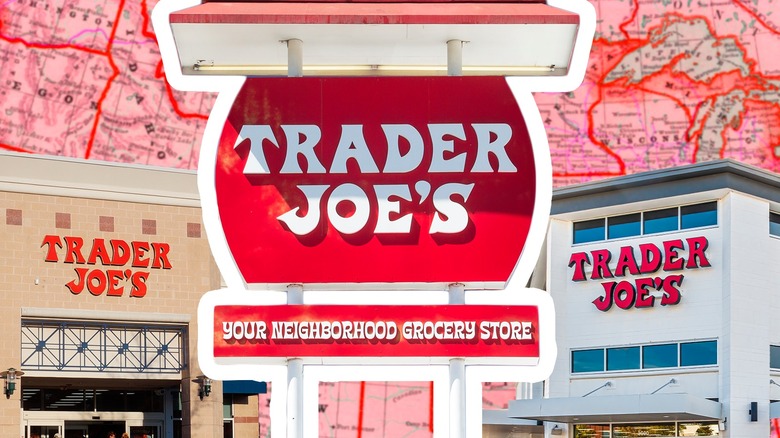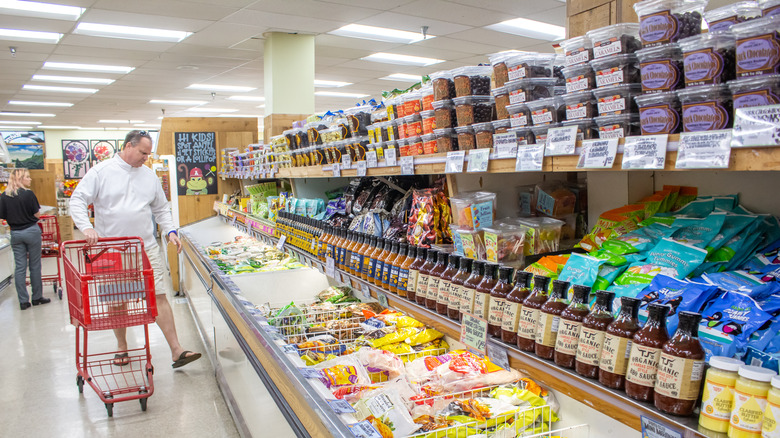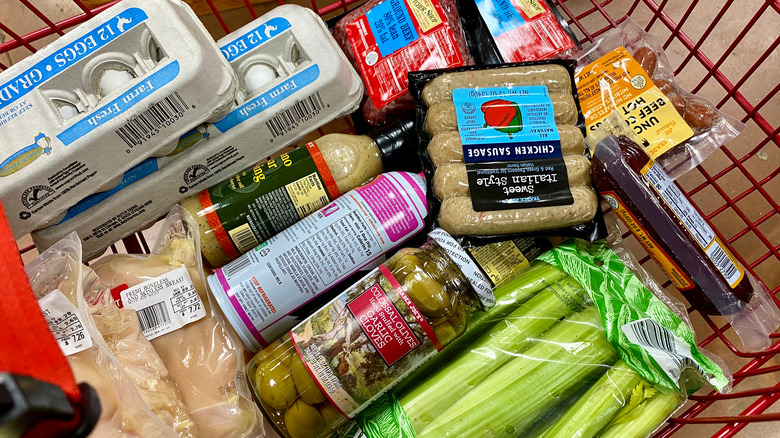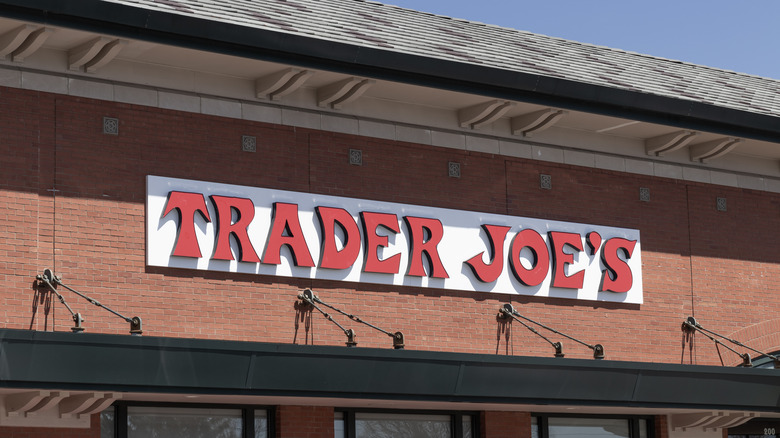Trader Joe's Is For Everyone, And Its Store Locations Should Reflect That
Some people are can't imagine not living near a Trader Joe's. But believe it or not, there are entire communities with freezers that have never seen a bag of mandarin orange chicken; their spice cabinets never graced by a container of furikake seasoning blend; their refrigerators never home to the fan-favorite vegan tzatziki. Aside from missing out on all of the viral products, there are economic benefits to shopping at Trader Joe's that people in my hometown, and others like them, have been robbed of.
Living in and out of Chicago for the last 10 years, I've grown more appreciative of my Trader Joe's trips. But it was a luxury I took for granted until the height of the pandemic in 2020, when I took refuge with my parents in Champaign-Urbana, enduring months on end without my beloved TJs. No longer did I have my favorite Trader Joe's foods, nor the easy meals I could throw together with them, to look forward to — and the local grocery stores simply didn't provide the same experience for me. I began to ask myself, why doesn't a Big-10 college town. home to more than 50,000 University of Illinois students have a Trader Joe's? And I wasn't the only one. Students had been voicing their deprivation, too. But despite consideration in 2021, the closest TJ's is still hours away.
My hometown isn't alone in its quest for a Trader Joe's. There are a number of other well-deserving communities that have pleaded for a store. From El Paso, Texas to Notre Dame, Indiana, people in cities and towns across the country are longing for a TJs. Many of them are still waiting — and there couldn't be a better time for Trader Joe's to expand than now.
Income levels in Trader Joe's locations are more than average, and it's not a good look
While there is no formula or demographic requirement behind where Trader Joe's sets up shop, analyses show that they tend to do so in counties where the average household income is about $10,000 above the median, per a 2018 episode of the "Freakonomics" podcast. The same trends can be shown when you break Trader Joe's locations down by their designated neighborhoods within those counties. A 2020 study that focused on Southern California found that the chain had more locations in neighborhoods of upper-middle-class incomes as opposed to middle and lower-class incomes. As the current food desert crisis in the U.S. shows, Trader Joe's is hardly the only grocer guilty of serving affluent neighborhoods. It is, however, partly responsible for creating them.
Research by Attom Data Solutions found that Trader Joe's was the number one grocery store in relation to rising home and investment property values, with the average price of homes in the same zip code nearing $1,000,000. According to a Real Estate Consulting report, a street-level store can also raise rental rates by an average of 5.8%. Apartment Therapy termed it the "Trader Joe's Effect," but it's clear gentrification. Where Trader Joe's goes, the wealthy people follow, pricing the lower-income people out. Perhaps the most scandalous example is in the case of a predominantly black neighborhood in Portland, Oregon, which rejected plans for a Trader Joe's location in 2014 over fears that it'd result in further gentrification. It's high time that Trader Joe's makes moves to curtail this trend and the reputation that comes along with it. And a closer look at what's on the store shelves shows why.
Trader Joe's store prices don't match their zip codes, even amidst inflation
Despite Trader Joe's association as an upscale grocer, the company has managed to remain significantly more affordable than other grocers, even amidst inflation. In the last four years, grocery prices have increased 25% — surpassing the overall inflation rate of 19% that hit American consumers over the same period. Meanwhile, data showed TJ's prices were 19% lower than average in 2022. While not all items are cheaper at Trader Joe's, a 2023 breakdown by CNet determined you could save as much as $80 on basic grocery items.
This is largely because 80% of products sold at Trader Joe's are made for its private label, meaning the company cuts out the middlemen and purchases products directly from the supplier. The money it saves in doing so is, in turn, passed along to the shopper. Add that to all of the money that Trader Joe's saves on marketing, store design, energy efficiency, packaging, and the fact that you can't get their products anywhere else, and it's evident how the grocer maintains steadily affordable prices amidst the greater economic challenges. It also explains why, in comparison to other organic, specialty stores it doesn't feel quite so bougie.
The steadily affordable prices found on Trader Joe's shelves have come to mean that it doesn't carry the same, negative stereotypes in the minds of consumers as other specialty grocers do. That suggests that, as compared to say an Erewhon or a Whole Foods — the former of which has been said to represent everything that's bad about LA with gimmicks such as a $32 bag of ice — if a Trader Joe's location appeared in a neighborhood with an average (or even slightly below-average) income level, it wouldn't just be accepted, it'd likely be celebrated.
There's no better time than now for Trader Joe's to expand
The landscape of American grocery stores represents a clear dichotomy — between the one percenters who will willingly spend your rent on their weekly groceries, and the vast majority of you reading this who simply want to get food to sustain themselves and their families without feeling robbed. To this day, Trader Joe's has placed its stores in locations that primarily serve the first. Only, the prices tell another story. While worries of gentrification and rent increases are means for concern, why should the rich be the only ones to benefit from the steadily affordable, convenient, and nutritious options that the proximity to Trader Joe's conveniences them with? Give Trader Joe's to the people who will actually appreciate it for all that it is.
Trader Joe's has been a place of refuge for shoppers throughout the years of skyrocketing grocery prices in America, and it will likely continue to be in the years to come. People like me who live in a city or a state without a single Trader Joe's location aren't just craving a bag of chili and lime tortilla twists or frozen Indian food — they're craving a break. No other grocer offers the combination of affordability, customer service, community, and quality of both fresh and prepared food (their freezer section alone is unparalleled) to the level that Trader Joe's does.
Add to that the creativity that the social media food revolution has garnered, and the demand for the unique, niche items that are constantly in rotation on Trader Joe's shelves has never been higher. While I don't know if my hometown will ever get a Trader Joe's, I do know that, whatever area the grocer does go on to expand to, it will be welcomed — and there's no better time than now for TJ's to start calling other, less affluent areas home.



